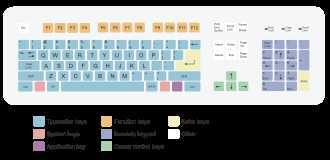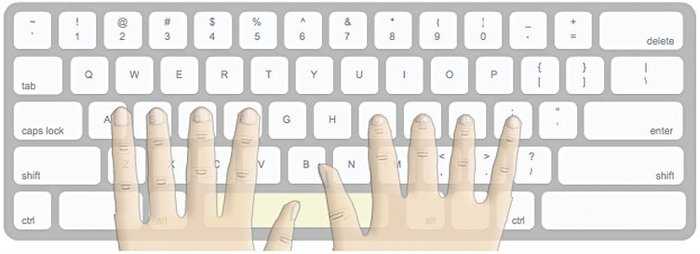Mastering different keyboard layouts can seem daunting at first, but with the right approach, you can become proficient across multiple systems swiftly. The key is consistent practice, familiarizing yourself with each layout’s unique key positions, and gradually increasing your typing speed. Using dedicated tutorials and overlay tools can accelerate your learning curve, making the transition smoother and more intuitive.
In brief, to master typing on different keyboard layouts, start by understanding the specific layout you want to learn, then practice regularly with targeted exercises and typing software. Focus on building muscle memory, and be patient—fluency comes with time and consistent effort.
Jumping into multiple keyboard layouts might feel overwhelming initially, especially if you’re used to a single system. However, adapting to various layouts like QWERTY, AZERTY, or Dvorak can greatly enhance your flexibility and productivity, particularly if you frequently switch languages or work with different devices. The secret is to approach learning step-by-step, integrating short practice sessions into your daily routine, and gradually challenging yourself with more complex texts. Whether for personal interest or professional needs, mastering diverse layouts opens new doors for efficient and versatile typing skills.
How to master typing on different keyboard layouts
Understanding the variety of keyboard layouts
Different countries and languages use unique keyboard layouts, which can feel unfamiliar at first. The most common layout is QWERTY, but many others exist. For example, AZERTY in France and Belgium, QWERTZ in Germany and Central Europe, Dvorak designed for efficiency, and Colemak for comfort. Recognizing these differences helps you better approach learning each layout.
Knowing which layout you need depends on your language, location, and typing goals. Some layouts prioritize ease of access to specific characters, while others aim to reduce finger movement. Understanding these variations can inform your practice strategy.
Differences between popular keyboard layouts
| Layout Name | Primary Use | Key Differences |
|---|---|---|
| QWERTY | English-speaking countries | Standard layout with familiar key placements |
| AZERTY | France, Belgium | Placed for French language, includes accented characters |
| QWERTZ | Germany, Central Europe | Y and Z keys swapped, special characters accessible |
| Dvorak | English typing efficiency | Rearranged for finger comfort, reduces finger travel |
| Colemak | Modern alternative for English | Fewer changes from QWERTY, easy to learn |
Understanding these differences helps you decide which layout to learn or switch to. It also guides your practice routines for optimal results.
Preparing to learn a new keyboard layout
Before beginning, it’s essential to set up your environment. Install the appropriate keyboard driver or language settings on your device. Practice switching keyboard layouts frequently to get comfortable with key placement.
Gather the right tools, like online typing tutors specific to your target layout. These tools often include exercises, games, and progress tracking to keep you motivated. Additionally, consider using physical or virtual overlays to visualize key differences.
Practicing systematically for mastery
Start with simple exercises focusing on accuracy over speed. As you improve, increase the difficulty with longer texts and timed tests. Consistency is key: dedicate daily periods for practice to build muscle memory.
Use typing games and apps tailored to different layouts to make practice enjoyable. Incorporate real-world tasks, such as writing emails or chatting, to adapt your skills to practical settings.
Techniques for effective learning
Focus on proper finger placement from the start. For instance, place your fingers on the home row keys and minimize unnecessary movements. Maintain good posture to reduce fatigue and increase precision.
Break down learning into sections, mastering one area before moving to the next. Use mnemonic devices or visual cues to remember key positions for less common characters.
Utilizing online resources and tools
Many websites offer free typing lessons for various keyboard layouts. Popular options include TypingClub, Keybr, and Ratatype, which support multiple configurations.
Download language-specific input methods or keyboard layouts directly from your system settings. These tools often include progress tracking, gamification, and practice exercises aligned with your goals.
Overcoming common challenges
Switching to a new layout can cause initial confusion and slower typing speeds. Be patient and practice regularly, focusing on accuracy. Expect some frustration but recognize it as part of the learning process.
If certain keys feel awkward, slow down and break exercises into smaller sections. Rest your fingers and hands to prevent strain, especially during long practice sessions.
Building muscle memory for different layouts
Repetition is vital in building muscle memory. Practice consistently, aiming for quality over quantity at first. Over time, your fingers will automatically locate keys without conscious effort.
Use drills that emphasize common letter combinations and words in your target language. Repeat these frequently to embed them into your long-term memory.
Adapting to unfamiliar key placements
Initially, unfamiliar layouts may feel foreign and slow. Focus on accuracy rather than speed, and gradually increase your pace. Keep your eyes on the screen instead of the keyboard to improve visual memorization.
Create cheat sheets or diagrams of key positions and review them regularly. You can also label keys temporarily to help your fingers memorize their positions.
Maintaining your skills across different layouts
Once you’ve learned multiple layouts, practice alternating between them. This keeps your skills flexible and enhances your adaptability. Set specific goals for each layout and alternate practice sessions.
Use different devices or virtual keyboards to challenge yourself and strengthen memory. Regularly switch layouts during tasks to maintain proficiency.
Additional tips for success
Set realistic goals and track your progress consistently. Celebrate small improvements to stay motivated.
Stay patient, as mastering multiple layouts takes time and effort. Keep practicing daily, and you’ll find your typing becomes more comfortable and efficient across different configurations.
Related topics to explore
- Choosing the best keyboard for language learning
- How to customize keyboard shortcuts for faster typing
- ergonomic tips for comfortable typing
- Best tools for learning to type in multiple languages
- Understanding keyboard shortcuts across different layouts
By understanding the characteristics of various keyboard layouts and practicing systematically, you can become proficient in typing on different configurations. Remember that patience and consistent effort are your best allies in this learning journey.
Keyboard Layouts – Things to consider before switching
Frequently Asked Questions
What are effective methods to adapt to different keyboard layouts quickly?
To adapt efficiently, practice regularly on the new layout and familiarize yourself with its key placements. Use online typing tutors or practice sheets specific to the layout. Incorporate short daily sessions to build muscle memory, and consider customizing your keyboard settings to better suit your preferences. Patience and consistent effort help you become comfortable with unfamiliar arrangements over time.
How can I improve my accuracy when typing on a new keyboard layout?
Focus on slow, deliberate typing to avoid errors while learning the layout. Use typing exercises designed for the specific keyboard to reinforce correct finger placement. Take regular breaks to prevent fatigue, which can lead to mistakes. Review your errors to understand common mispresses and adjust your technique accordingly. Over time, increased familiarity will lead to better precision.
What tools or resources support learning to type on different keyboard configurations?
Utilize online typing programs that offer lessons tailored to various layouts, such as Keybr or TypingClub. Download layout-specific keyboard maps to study and memorize key positions. Use keyboard customization software to modify layouts to match your preferences. Additionally, seek community forums or videos that offer tips and tutorials for specific keyboard styles to accelerate your learning process.
Final Thoughts
Mastering typing on different keyboard layouts requires consistent practice and adaptation. Focus on familiarizing yourself with each layout’s key positions through regular exercises. Use online tools and typing tutorials tailored to specific layouts to build confidence.
Practicing daily helps internalize the unique arrangements, increasing speed and accuracy. With dedication, you will become more comfortable typing efficiently across diverse keyboard configurations. How to master typing on different keyboard layouts becomes achievable through persistence and targeted effort.
I’m passionate about hardware, especially laptops, monitors, and home office gear. I share reviews and practical advice to help readers choose the right devices and get the best performance.






